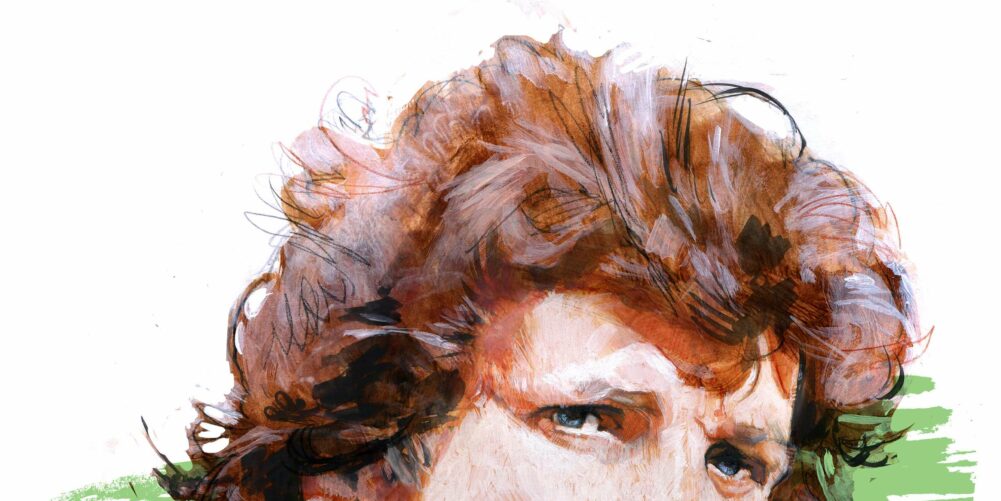There have been many fast bowlers down the years – Holding, Lillee, Hall – with actions graceful enough to set to music, but it’s probably fair to say that Max Walker wouldn’t be among them. Walker had a method which fulfilled the basics of feet, chest and arms all being involved in the business of delivering the ball, but not necessarily at the same time.
The Australian’s death from cancer last month was a reminder that cricket is littered with examples of players who have thrived at the highest level despite being regarded as less than orthodox. Walker was an important foil to a bowler like Lillee, and while they were the aesthetic equivalent of Michelangelo and the bloke at the emulsion counter in B&Q, when it came to getting the ceiling painted, they both – in their different ways – got the job done.
Same with Mike Procter, or Bob Willis. Procter let go of the ball off his right foot, or appeared to, which is fine if you’re a left-armer, which he wasn’t, while Willis had a run-up which started in another postcode, and was about as graceful as a World War One Sopwith Camel trying to take off from a potato field.
However, they were lethal on their day, Procter getting bowleds and lbws with 90 mph inswinging toe-cap crushers, and Willis, at the same speed, concentrating more on the ear, nose and throat department. When Willis hit the stumps, it was largely because the batsman had retreated far enough sideways to be unable to reach them.
Neither were all the West Indian quicks as graceful as Holding and Roberts. When Colin Croft was bowling, a quick single to get to Holding’s end was even thought of as a good idea, with Croft’s barrel-chested wide-of-the-crease release meaning that a right hander was invariably having to play at (or more often duck out of the way of) deliveries coming from mid-off.
Back in the Sixties, when all cricket matches were on BBC, and the BBC’s budget for the Test match stretched to just the one camera, without a wide-angled lens, England had a fast bowler by the name of JSE Price of Middlesex. Price’s action was pretty orthodox, but his run-up began from so wide – somewhere in the region of extra cover – that you’d be sitting there wondering why the batsman was staring so intently at a bowler’s run-up with no bowler on it when Price would suddenly appear out of the left hand side of the TV set.
More recently, we’ve had the Sri Lankan fast bowler Lasith Malinga, who, with a shorter run up and a change of sport, could have won several Olympic gold medals throwing the discus. Where Croft released from mid-off, Malinga lets go from mid-on, from an arm extension not dissimilar to an umpire signalling a no ball. And yet, against all basic tenets of coaching, Malinga hardly ever failed to land it right in the blockhole, on the line of middle stump.
If there was a prize for the most unusual release point of all, however, it would probably go to the former South African chinaman bowler Paul Adams, who first of all got himself into the kind of position adopted by short-leg fielders when they see a long hop coming down, and then kept his eyes firmly on the ball when he let it go. Which, considering he let it go from between his legs, was an act of contortionism on a limbo dancing scale.
The unorthodox is certainly less prone to a raised eyebrow than it used to be. Back in 1987, when Mike Gatting was out reverse sweeping Allan Border’s first ball in the World Cup final, the England chairman of selectors PBH May declared that he “couldn’t recall seeing the stroke in the MCC coaching manual”.
Mind you, PBH was the cricketing equivalent of that High Court judge who asked, “and who are the Beatles?” once announcing before the start of a home series that Derek Pringle had been selected as the all rounder because he’d heard reports (not seen, mind you, heard) that Pring was “hitting it over the top this summer.” At which point you found yourself wondering if anyone had informed the chairman that the visitors were in fact the West Indies, and if so, whether he envisaged Derek launching Marshall, Walsh, Patterson, Ambrose and Bishop over the top of the pavilion.
Batsmen have as many quirks and foibles as bowlers, and not everyone can be a David Gower, who was the only batsman I ever saw who could make getting caught in the gully look like poetry. In the same teams as Gower, we’ve had the likes of Derek Randall, and Peter Willey, neither of whom could be described as either orthodox or pretty.
While Gower would stand statuesque and barely registering a pulse rate while the bowler ran in, Randall was performing, were you to have dressed up in a black shirt and shorts, a song and dance routine not dissimilar to the New Zealand rugby haka. While Willey’s stance, later copied by Shivnarine Chanderpaul, gave the impression that a perfectly straight bat would sent the ball through wide mid on. But just look at their records.
Older readers might remember an all rounder who played for Northants in the Seventies by the name of Jim Yardley, who had only one stroke. If indeed a squirt can be called a stroke.
And it went, every time, through the gully. You could have posted three gullies for Jim, and some captains actually did, but the ball still found a way through.
One of England’s most consistent performers over a long period was Paul Collingwood, the team’s Bob The Builder, who could have done the job equally well had you swapped his bat for a shovel. I half expected Colly to come out to bat wearing a high-viz jacket, with a mug of tea, and a rolled up copy of The Sun in his back pocket, but he got runs. Ugly runs, maybe, but ugly runs are still runs.
In any event, orthodox is overrated. The most beautiful leaver of a ball ever was Colin Cowdrey, and there’s a photograph of him somewhere in the archives in a classic pose, bat raised high in the air, and head perfectly balanced under a pristinely starched blue England cap.
And an upper lip as stiff as an upper lip can be when your off stump is halfway back towards the wicketkeeper.
This piece originally featured in The Cricket Paper, October 14 2016
Subscribe to the digital edition of The Cricket Paper here












